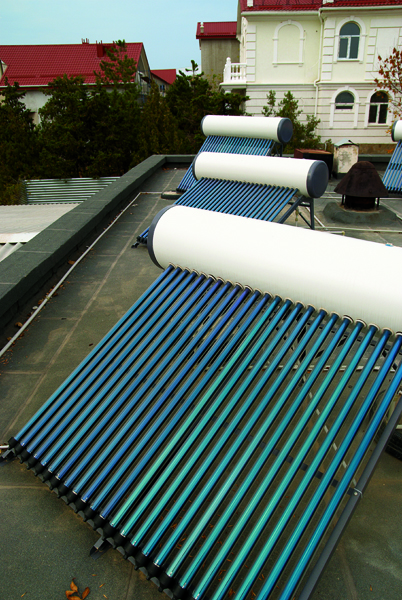 A guide to upgrading your hot water heater
A guide to upgrading your hot water heater
by Samantha Wittchen
According to Energy Star (energystar.gov), in 2009, 14 percent of a household’s annual average energy costs went to heating water. If you have an old, inefficient water heater, that number is probably higher. In January 2011, the rate caps on electricity for PECO customers will expire (PPL customers experienced the change earlier this year), so if your water heater is electric, you will see a 30 percent increase in that expense. With the deadline looming, there’s no time like the present to upgrade your water heater.
The two most common fuel types for water heaters are electric and gas. However, solar has been gaining popularity, and the US Department of Energy reports that 1.5 million domestic homes and businesses have invested in solar water heating systems.
Water heaters come in various forms, but conventional storage (tank), demand (tankless) and solar are most relevant here. The first two can be powered by either gas or electricity, with upsides and downsides for both. Gas burns relatively cleanly, but it’s energy-intensive to extract from the earth. Plus, if your house doesn’t already have a gas line, the cost to run one may be very high.
Conventional water heaters are the cheapest option ($200 to $800), and they’re also the cheapest to install ($200 to $400). If you’re handy, you might even be able to do it yourself. However, they’re also the least efficient due to standby heat loss—the heat lost by hot water sitting in the tank.
Tankless water heaters don’t have the standby heat loss issue, but are typically more expensive ($400 to $1,200), and installation costs can be two to four times more than conventional models, depending on whether or not installation requires changes to supply lines or venting. The upside is that you can expect your operating costs to be 30 percent less than with a conventional unit.
Solar water heaters have a high initial cost ($2,500 to $5,000), but their operating costs are much lower than any of the alternatives. On average, a solar water heater lowers your monthly bills by 50 to 80 percent, and your heating costs won’t rise with future fuel rate hikes. Additionally, the PA Sunshine Program provides rebates for homeowners who want to install solar water heaters.
A final consideration is size. Most people make their decision based on total capacity. Look instead to the first-hour rating (FHR), which tells you how much hot water can be delivered in an hour of use. Spend a little time figuring out what your usage is in the busiest hour of your day, and you can ensure that you’re sizing your water heater correctly.
In the world of water heaters, choices you make about the fuel type, size and type all affect the efficiency of the unit. Luckily, manufacturers are required to publish these stats on a big yellow EnergyGuide sticker on the side of the unit. Make sure you look for it—and the Energy Star seal—when you’re shopping around.
It’s also a good idea to do a simple analysis of your projected annual operating costs before heading to the appliance store. The more you know about your specific case, the better equipped you’ll be to make the best choice. The Department of Energy shows you how to calculate your operating costs on their Energy Savers website (energysavers.gov/your_home/water_heating).
In the meantime, if you aren’t in the market for new water heater, try turning down the temperature on your current model. Factory settings are often much higher than necessary, and 120˚F should be good enough to keep you toasty in the shower.


